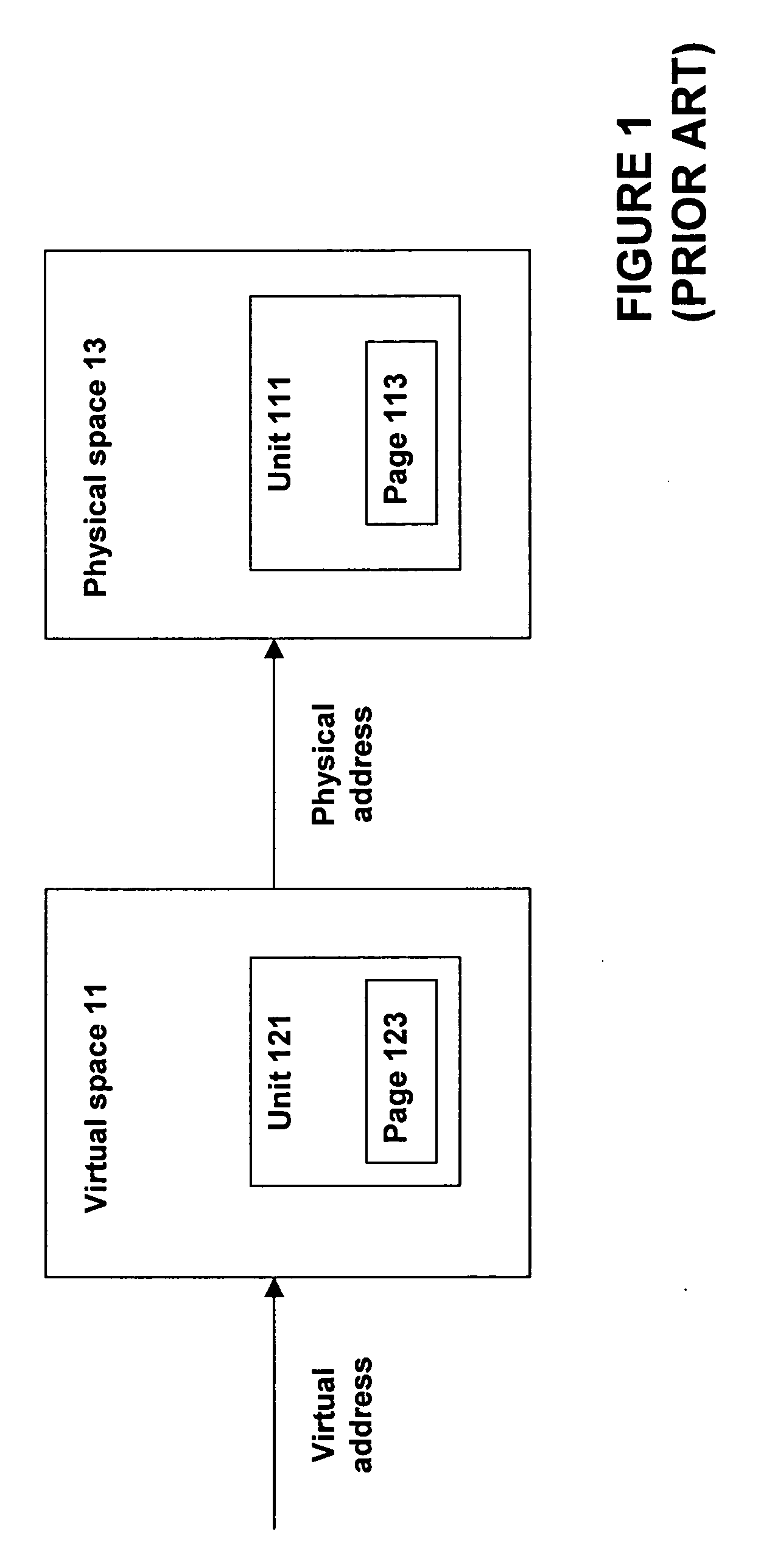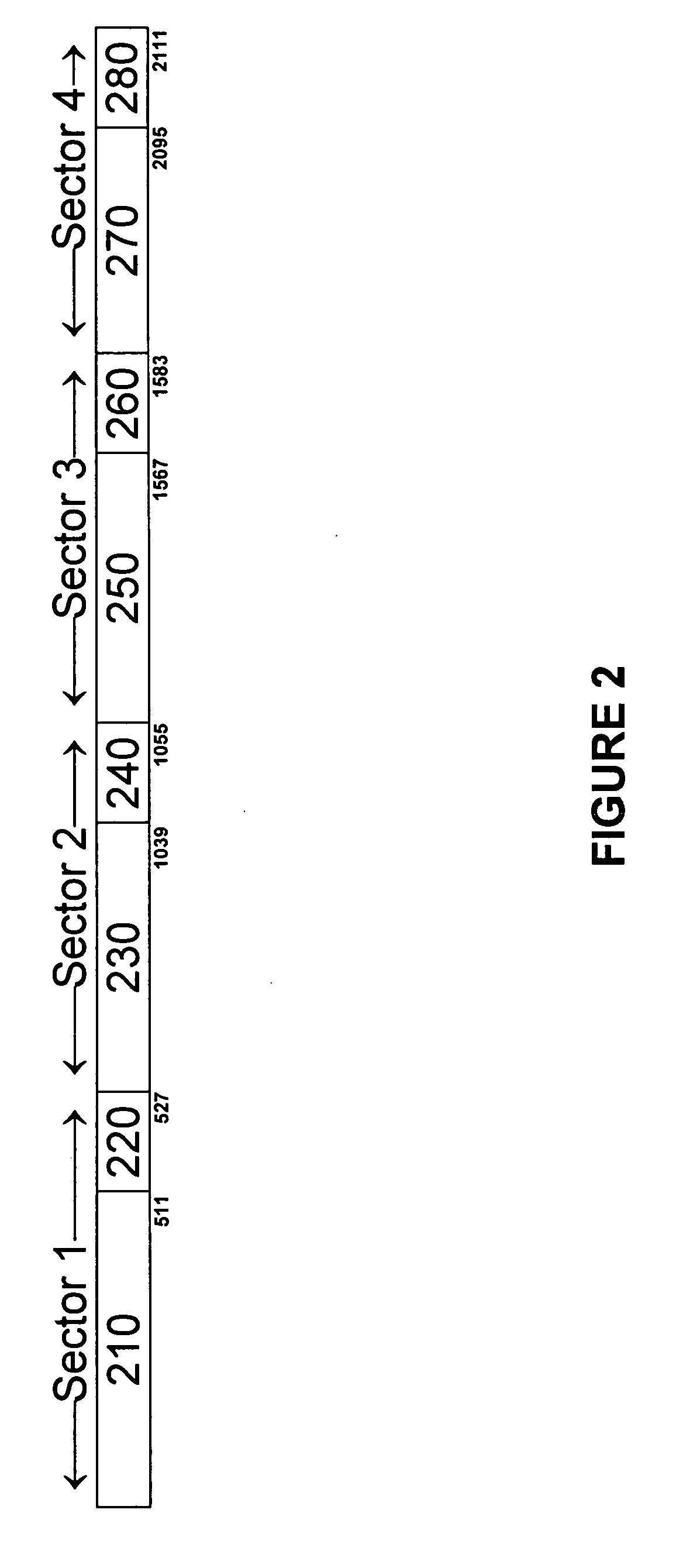Method of storing control information in a large-page flash memory device
a control information and flash memory technology, applied in the field of flash memory, can solve the problems of not being able to erase a previously written area of the memory without a prior erase, and the flash device has certain limitations, so as to achieve the effect of sufficient storage spa
- Summary
- Abstract
- Description
- Claims
- Application Information
AI Technical Summary
Benefits of technology
Problems solved by technology
Method used
Image
Examples
first embodiment
[0067] the present invention is illustrated in FIG. 5. Here, space for the unit fields is not associated with any specific sector but with the page as a whole. However, for every sector, the user data, the ECC and the page fields are grouped together and are adjacent to each other. Even though the page size in FIG. 5 is exactly the same as the page size in FIG. 2 and in FIG. 3 (in all cases 2112 bytes), the sizes of the fields that can be stored within the page is larger. Each of the four sets of ECC fields in FIG. 5 is 10 bytes long, compared to 6 bytes in FIG. 4, which provides the fields' sizes for FIGS. 2 and 3. Each of the four sets of page fields in FIG. 5 is 4 bytes long, compared to 2 bytes in FIG. 4. There are 8 bytes of unit fields in FIG. 5, the same as in FIG. 4.
[0068] It is thus possible to get both better reliability (larger ECC) and better flash management (larger page fields) while still using the same flash memories as used in prior art systems.
second embodiment
[0069] the present invention is illustrated in FIG. 6. Here not only the unit fields are not adjacent to the sectors' data, but also the page fields are not adjacent to their respective sectors but are grouped together at the beginning of the page, following the unit fields. Only the ECC bytes remain adjacent to their corresponding sectors. The sizes of fields in this embodiment is exactly the same as in the embodiment of FIG. 5, in spite of the different structure. Each set of ECC fields is 10 bytes long, each set of page fields is 4 bytes long, and the unit fields are 8 bytes long. This points out the fact it is not the relative order of the various fields that counts, and different orders can provide exactly the same field sizes and therefore exactly the same advantages.
third embodiment
[0070] the present invention is illustrated in FIG. 7. Here no control fields are put adjacent to their sector's data. Both the page fields and the ECC fields immediately follow the unit fields. Again, the end result is the same as in the previous embodiments—larger ECC and larger page fields compared to prior art systems using the same memory devices.
[0071] Many other arrangements are also possible—the unit fields may be larger than in prior art systems (unlike in all the above embodiments), the control fields may follow the sectors data, the control fields may be scattered in a few locations within the page, etc. There is absolutely no importance to the exact location of the individual fields or data sectors within the page. What counts is only the number of bytes allocated to the various types of control fields. The advantages of the present invention are not the result of any specific structure, but of the fact that space wasted in prior art systems is put to good use in this in...
PUM
 Login to View More
Login to View More Abstract
Description
Claims
Application Information
 Login to View More
Login to View More - R&D
- Intellectual Property
- Life Sciences
- Materials
- Tech Scout
- Unparalleled Data Quality
- Higher Quality Content
- 60% Fewer Hallucinations
Browse by: Latest US Patents, China's latest patents, Technical Efficacy Thesaurus, Application Domain, Technology Topic, Popular Technical Reports.
© 2025 PatSnap. All rights reserved.Legal|Privacy policy|Modern Slavery Act Transparency Statement|Sitemap|About US| Contact US: help@patsnap.com



